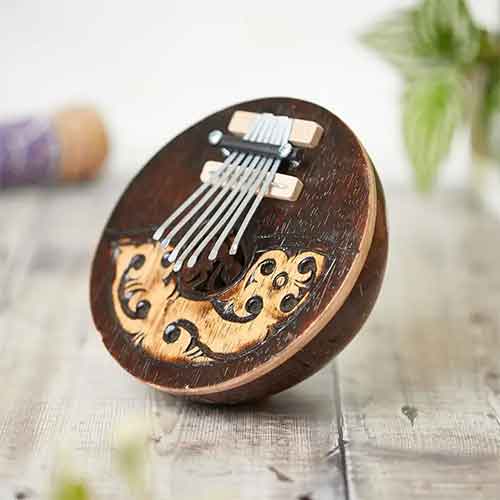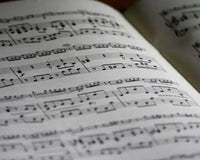Bongo and tabla are both percussion instruments that have their roots in different parts of the world. Bongo originated in Cuba, while tabla has its origins in India. These instruments may look similar at first glance, but they have some significant differences that set them apart. It is not uncommon to get confused about which one is which. Let's explore these in closer detail and break down the five key differences.
1. Country Origin
Both of these drums come from different countries, the bongo drum originates from Cuba and the tabla drum is originally from North India.
2. Materials
Most bongo drum frames are made from a solid wood and the drum skin is usually made from an animal skin hide or plastic. When the tabla drum was first invented, it was made from clay but now it is made from metal, typically, bras, steel, or copper. The bongo is a set of two drums of different sizes that are attached to each other. They are traditionally made of wood or fiberglass and have animal skin heads. On the other hand, the tabla is a set of two drums of equal size, which are made of wood with goat or buffalo skin heads.
3. The Sound
The instruments are both played a different way and this affects the sound. For example, bongos can be played with sticks, the palm of the hand and the fingertips. Whereas the tabla drum is played simply by alternating the fingertips. The tabla drums skin is accompanied with various starches from rice, wheat and a black powder to form a parchment known as syahi. This parchment allows for an effect that alters the resonance frequency of some lower order vibrations.
Another key difference between bongo and tabla is their sound. Bongo produces a sharp and crisp sound, while tabla has a more rounded, resonant sound. The tuning of the two instruments also differs. Bongo is tuned using tension rods, while tabla is tuned by applying pressure to the head of the drum.
4. Playing technique
The playing techniques for bongo and tabla also differ. Bongo is played using a combination of open and closed strokes, while tabla is played using a variety of strokes, including open, closed, and muted strokes. The playing style of bongo is more rhythmic, while tabla involves playing both melody and rhythm.
5. Design
Looking into the design of each instrument you will notice that the bongos are commonly connected to each other, with the tabla, however, they are separate. The size is also another factor. Bongo drums are usually the same size as each other but the tabla has a big and small to help vary the sound.
The solid wood connects the bongos together and a metal frame keeps the hide tight. With the tabla drum the hide is kept in place using thin strips of hide that has been tied to the bottom of the drum. Between the thin tied hide, there are also some blocks that helps to improve the resonance further.
6. Purpose
Each drum has its own varying purpose, the bongo drum was originally designed for performance and was used by dance bands. The tabla drum is considered one of the most important percussion instruments throughout India accompanying vocalists, instrumentalists and dancers.
7. Genre
In terms of their use, bongo is commonly used in Latin American music, including salsa, rumba, and Afro-Cuban jazz. Tabla, on the other hand, is a staple of Indian classical music and is also used in folk and devotional music.
8. Tuning
The tuning of these instruments is also different. The bongo is tuned using tension rods, while tabla is tuned by applying pressure to the head of the drum.
Solid Oak Bongo Drums

Bongo drums are an Afro-Cuban percussion instrument consisting of a pair of small open bottomed drums of different sizes. In Spanish, the larger drum is called the hembra and the smaller the macho. The Bongo drums are played by beating with the hands. Bongos are the most widespread Cuban hand-drums, A bongo drummer is known as a bongosero.
They produce relatively high-pitched sounds and should be held behind the knees with the larger drum on the right when right-handed. It is most often played by hand and is especially associated with Cuban music with a steady pattern of eighth-notes known as the Martillo or "hammer". They are traditionally played by striking the edge of the drumheads with the fingers and palms.
Traditional Indian Tabla Drum

The tabla drum is a percussion instrument originating from the Indian subcontinent, consisting of a pair of drums. It has been a particularly important instrument in Hindi classical music, since the 18th century, and remains in use in India, Pakistan, Afghanistan, Nepal, Bangladesh, and Sri Lanka.
The name tabla likely comes from Tabl, the Persian and Arabic word for drum. However, the ultimate origin of the musical instrument is contested by scholars, some tracing it to West Asia, whilst others tracing it to the evolution of indigenous musical instruments of the Indian subcontinent.
The tabla consists of two single-headed, barrel-shaped small drums of slightly different size and shapes: Daya also called Dahina meaning right (also called "tabla"), and Baya also called Bahina meaning left (also called "dagga"). The Daya tabla is played by the musician's right hand (dominant hand). The Baya tabla is a bit bigger and deep kettledrum shaped. Each is made of hollowed-out wood or clay or brass, the Daya drum laced with hoops, thongs and wooden dowels on its sides.
The dowels and hoops are used to tighten the tension of the membrane. The Baya construction and tuning is about a fifth to an octave below that of the Daya drum. The musician uses his hand's heel pressure to change the pitch and tone colour of each drum during a performance. The playing technique is complex and involves extensive use of the fingers and palms in various configurations to create a wide variety of different sounds and rhythms.
The bottom line is that the bongo drums originated in Cuba whereas tabla drums originated in India, The Bongo has a higher frequency range and higher pitch than the Tabla drum.
Tabla is made from Teak & Rosewood, the bongo drumheads are made of animal skins, but they're also available in thin plastic. The body of the drum is usually wood, metal or even ceramic. Tabla drums come with a cushion underneath it is used to balance the drum.

Although pricing can always vary with every product on the market depending on materials used but on average Tabla drums are a lot more expensive and we believe this is due to the high-quality materials to make such an instrument. While both bongo and tabla are excellent percussion instruments, they have their unique characteristics that set them apart. Whether you prefer the sharp, rhythmic sound of bongo or the rounded, resonant sound of tabla, both instruments offer a rich musical experience that is sure to captivate any listener.
Up next: The History of Marching Drums









